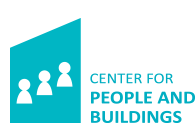CfPB's Contribution to Developing the Governmental Physical Work Environment
28 september 2016

In recent years, the Center for People and Buildings has been closely involved in the development of guidelines for the Governmental Physical Work Environment (PWE). In short, accommodations for the Dutch national government. As a knowledge center, CfPB’s primary role is to provide scientific knowledge, and applied research where necessary. The research focuses mostly on learning from others’ experience – and also from your own organization! The input is used by the Ministry of the Interior and Kingdom Relations in creating the guidelines for the Governmental Physical Work Environment (PWE).
During the early years, the first research reports appeared, containing principles to guide the creation of the so-called “governmental workspace” based on extensive research. Among other things, they provided insight into occupancy rates and appropriate flex factors for the national government. Research was also done on activities performed by public servants, helping to determine which workplace mix is best for (a specific group of) public servants.
Functional qualities
More recently, the functional qualities and costs of government buildings have received much attention. The questions involved are: “Which qualities do offices need in order for employees to work as comfortably and efficiently as possible?” and “What will it cost to reach that level for all our offices?” Employees’ experiences are essential here. The list of functional qualities takes easily avoided past “mistakes” into account, among other things. For example, positioning: don’t put the pantry right next to open workspaces, and don’t combine too many open workspaces. Applying the functional qualities helps assure that those lessons stay learned in a new or renovated work environment.
How does it work?
Recently, a comprehensive review was conducted focusing on employees’ experiences. It was performed at four different locations housing government agencies (mostly) according to PWE guidelines. Various lessons could be learned, such as:
- There’s a lack of well-insulated spaces for phone calls that can be closed off. Phone calls cause a great deal of nuisance in open spaces. Therefore, it’s always a good idea to provide closed-off phone spaces (ideally near the open spaces).
- Some places can’t be used optimally (e.g. because a desktop is needed and the space doesn’t provide one (for example, landing zones, lounges, booths and/or meeting spaces). Flexible ICT facilities are essential to multifunctional use of spaces. Especially at peak times, this can create extra possibilities.
- Watch out for possible negative effects of Working Independently of Time, Location or Device (WITLD) on social cohesion and communication within teams. Facilitate communication software and videoconferencing to encourage social cohesion and communication, provide clear anchor points and actively create moments to meet up.
- There were also lessons about practical applications of standards (by e.g. architects or accommodations consultants). All these lessons will be used to further improve and optimalize the guidelines.
The PWE guide (the Governmental Workplace Guide) provides a brief summary of all PWE guidelines plus the underlying considerations and arguments. The guide can function as a handy summary of the guidelines and their application. A new version of the PWE guide will soon be available, updated based on lessons learned this past year.
The research described here is only a selection of the research and reports from the past year focused on the Governmental Physical Work Environment. Most of these reports are publicly accessible and may be found on the CfPB website (in Dutch).
